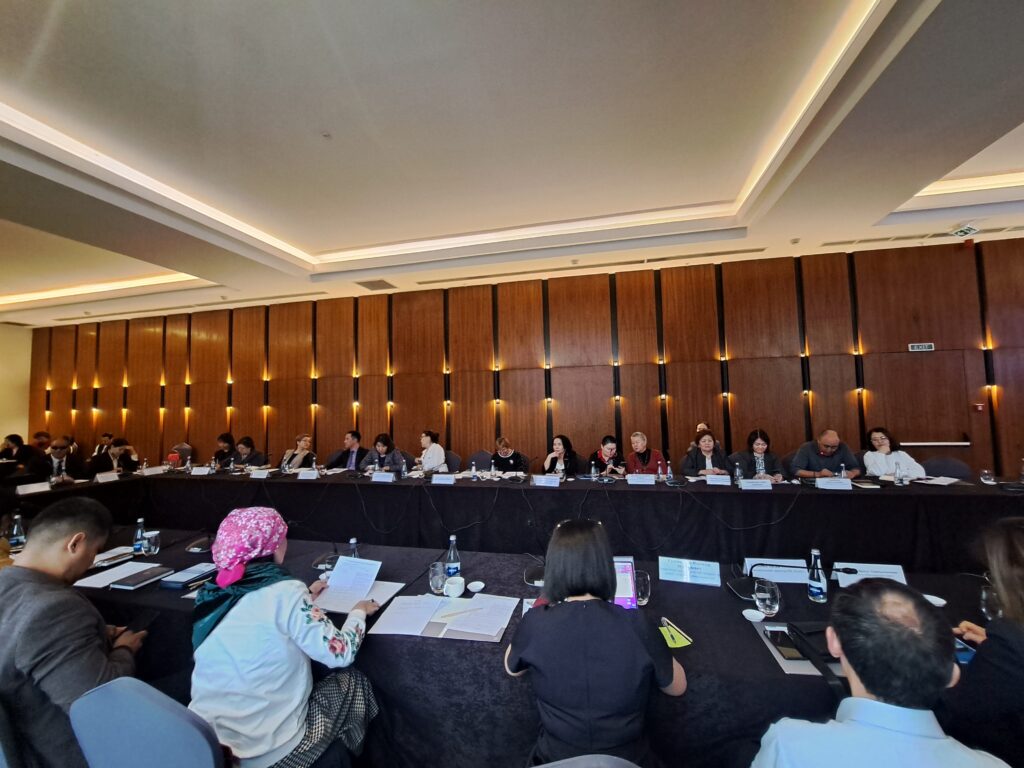On March 19, 2024, the team of the “InKoom” project participated in the next meeting of the Council of People with Disabilities under the Cabinet of Ministers of the Kyrgyz Republic. During the meeting, representatives from government bodies and public organizations defending the rights of people with disabilities discussed the current situation of people with disabilities and proposed solutions to the issues.
The event was attended by the Deputy Chairman of the Cabinet of Ministers of the Kyrgyz Republic, Edil Baysalov; the Minister of Labor, Social Protection, and Migration of the Kyrgyz Republic, Gulnara Batyrova; Deputy Chairman of the Council, Tolkunbek Isakov; Members of Parliament of the Kyrgyz Republic, Dastan Bekeshev and Venera Raimbachaeva; Director of the “Tilektesh” Center, Lola Abdulkadyrova; Plenipotentiary Representatives of the President of the Kyrgyz Republic in the regions; representatives of the Ministry of Emergency Situations, experts, and civil society representatives.

The Minister of Labor, Social Security, and Migration of the Kyrgyz Republic spoke about the rights of people with disabilities in the labor sector. According to Gulnara Baatyrova, the state program “Accessible Country” for citizens with disabilities is currently being implemented.
“As part of digitalization, the ministry has developed and launched the portal and modules ‘Zanyatost.kg’ and ‘Electronic Application for Registration as a Job Seeker’ to promote employment for the population, including citizens with disabilities,” she said.
 Minister of Labor, Social Security, and Migration of the Kyrgyz Republic – Gulnara Baatyrova, Deputy of the Jogorku Kenesh of the Kyrgyz Republic – Dastan Bekeshev
Minister of Labor, Social Security, and Migration of the Kyrgyz Republic – Gulnara Baatyrova, Deputy of the Jogorku Kenesh of the Kyrgyz Republic – Dastan Bekeshev
In his speech, Dastan Bekeshev, Deputy of the Jogorku Kenesh, emphasized the need for the Ministry of Emergency Situations (MES) to study the experience of other countries in rescuing people with disabilities during emergencies and to take prompt measures to prepare for such situations.
Gulmira Kazakunova, the head of the public organization “Equality” for people with disabilities, shared her experience during the recent earthquake, when she realized that people with disabilities are not prepared and do not know how to behave during emergencies. She presented questions and proposals for the MES:
1. Is there an instruction for “Evacuation and rescue of people with mobility impairments, including those with disabilities, during natural disasters”?
2. Is there a fund for rescuing various categories of citizens, including people with disabilities?
3. Is there a commission for assessing readiness for disasters from the perspective of considering the needs of people with disabilities?
4. Has there been a study on the level of inclusion of issues related to people with disabilities in MES rescue processes and other activities?
5. Are there video materials in sign language on how to respond to rescue operations during natural disasters for people with hearing, speech, and visual impairments?
6. How are people with disabilities from all categories notified during emergencies?
7. Will there be a system for notifying people with disabilities during emergencies (e.g., for the blind and people with hearing impairments)?
8. Is there a program for training civil society, volunteers, and MES personnel on providing assistance to people with disabilities during emergencies?
